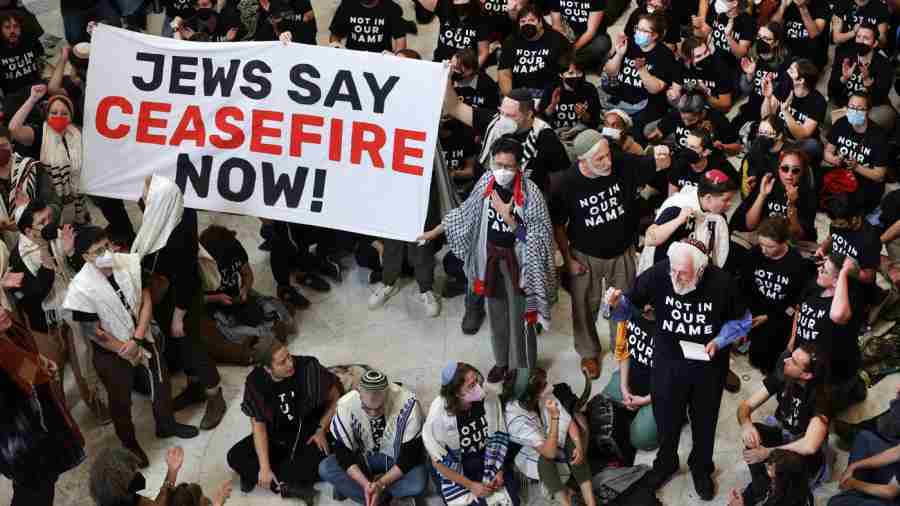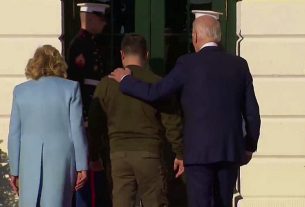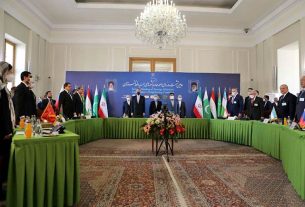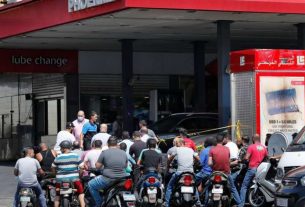![]() Members of Jewish Voice for Peace and IfNotNow hold a demonstration in support of a ceasefire in Gaza in the Cannon House Office Building on October 18, 2023, in Washington, D.C.ALEX WONG / GETTY IMAGES
Members of Jewish Voice for Peace and IfNotNow hold a demonstration in support of a ceasefire in Gaza in the Cannon House Office Building on October 18, 2023, in Washington, D.C.ALEX WONG / GETTY IMAGES
Wed 22 October 2023:
Hamas can benefit militarily from the ambiguous truce deal, but as an opportunity rather than a necessity.
The deal that people on all sides of the fighting in Gaza and the international community anticipated and longed for has finally been agreed.
In many ways, it has been vague, starting with the time it was accepted by all sides – overnight on Wednesday and across 8 hours’ worth of time zones between Qatar, the main intermediary, and Washington, the principal force pushing the Israeli cabinet, with its reluctant and eager ministers, to accept it.
The deal’s designation is vague, possibly deliberately: The official statement from Qatar calls it a “humanitarian pause” but media in the Arab world and Israel seem to prefer “truce” or “ceasefire”, as does world media. Apart from the difference in meaning between those terms, this reflects how sensitive the weeks-long indirect negotiations must have been.
True to the uncomfortable and nervous relationship between Israeli and Hamas negotiators, even the duration is vague: Leaks during the last days of the indirect talks have ranged from three to five days. In the end, the span is in the middle, four days but, to add vagueness, the deal allows for the extension by one day for each extra batch of 50 captives Hamas releases.
The final ambiguity is when this difficult deal will come into force – that will be announced by the end of Wednesday.
Yesterday, I analysed what Israel has to gain and lose from the deal. The slight change now is that Netanyahu earned some brownie points with the Israeli public by presenting the Israeli cabinet with the deal, which he was most likely arm-twisted into by Joe Biden. Still, his political survival after the fighting in Gaza stops for good is far from being assured.
His initial public opposition to the first mentions of a deal indicated the opinion of the Israeli extreme right wing, politically mostly directed by Jewish settlers in the occupied West Bank and their patrons in the Knesset and cabinet. To them, Hamas are terrorists to be killed, eradicated and expelled from the Gaza Strip with captives being released either voluntarily or by force, and they took any suggestion of negotiating with Hamas as an insult and an offence.
Having become the party that negotiates with the State of Israel, even if through intermediaries, Hamas gained political acceptance in the international community. In just six weeks since October 7, its status changed from “terrorists with whom any negotiations are unacceptable” to “an organisation that has control on the ground”.
Even though Israel and the United States continue calling it “terrorist”, a term that usually connotes “people we do not negotiate with”, they have recognised reality and accepted the Palestinian organisation as their opposite side in negotiations.
To be sure, Hamas and Israel have negotiated truces in the past, always through third-party mediation, usually that of Egypt. But those were tactical battlefield issues rather than full-fledged international agreements involving several states.
Hamas scored an important psychological, political and strategic victory: The Israeli cabinet and the US president have negotiated with Hamas, reached an agreement and said publicly they intend to honour it. Two months ago, today’s reality would have been unimaginable.
But, on the military side, Hamas has little to gain from the pause/ceasefire/truce. As I explained yesterday, it is militarily very convenient for Israel but makes no real difference for Hamas, despite fears voiced by the Israeli public that it would use the opportunity to regroup.
Unlike Israel, which has a conventional army that fights on the ground and whose progress can be easily followed by plotting the positions of its armoured formations on commercially available satellite photos, the Qassam Brigades are almost untraceable from the air.
They move lightly, on foot aboveground, or underground through the network of tunnels crisscrossing the Strip. Their weapons, apart from multiple-rocket launchers, are small and portable, so they can be moved via the tunnels.
By keeping the uniformed fighters and their easily movable weaponry underground, Hamas largely stays beyond the reach of most conventional means of detection. Hamas command centres are under the ground, Hamas armouries are below the surface, and Hamas tunnels connect those with almost every point in the Gaza Strip – so why would Hamas need a pause in the fighting to regroup if it can do so anyway?
Certainly, it will exploit the four quiet days, if they indeed happen, to its military advantage, but that is an opportunistic, tactical chance rather than a strategic necessity.
If the ceasefire holds, Hamas will be able to reduce the number of fighters on lookouts, in ambushes and on operational readiness, giving its fighters some much-needed rest and a possibility to dash for a brief reunion with their families wherever in Gaza they may be.
Both militaries will need to be on alert during the pause as the realities on the ground are often much different than the beliefs and expectations of those who imagine the battlefield from afar and negotiate from secure offices and comfortable international hotels.
In most wars that I witnessed, ceasefires were broken, often by unpredictable and uncontrollable events on the ground. The shortest internationally brokered ceasefire I remember, in Bosnia-Herzegovina, lasted a full one minute and 17 seconds if my memory serves me right.
Any hothead with a gun, and there are more than 50,000 such potential own decision-makers, can decide that he has a reason to take any of his grudges to his enemies. If just one soldier lets off a few bullets, he may jeopardise all hopes of four days with nobody getting killed, some civilians getting to safety, much-needed aid coming in, restoration of some civilian infrastructure and freeing of captives and prisoners.
Having surmounted all the difficulties to clinch the deal, the world can now just pray that the commanders on both sides can, for 96 hours, exercise full and effective control of their forces. Down to the last fool!

______________________________________________________________
FOLLOW INDEPENDENT PRESS:
WhatsApp CHANNEL
https://whatsapp.com/channel/0029VaAtNxX8fewmiFmN7N22
![]()
TWITTER (CLICK HERE)
https://twitter.com/IpIndependent
FACEBOOK (CLICK HERE)
https://web.facebook.com/ipindependent
Think your friends would be interested? Share this story!





